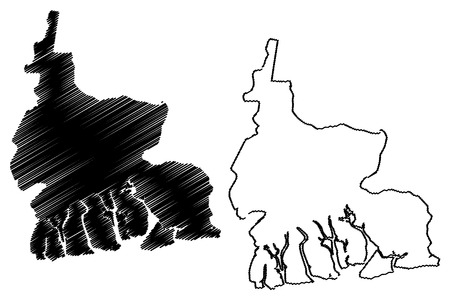In the Footsteps of Boudica: An Introduction
To walk the ancient landscapes of Norfolk is to step directly into the shadow of one of Britain’s most enduring legends—Queen Boudica and her Iceni tribe. Long before Norfolk was known for its sweeping broads and coastal marshes, it was the heartland of the Iceni, a powerful Celtic tribe whose history still echoes through these fields and ruins. Boudica, their renowned warrior queen, famously led a fierce revolt against Roman occupation in AD 60–61, leaving an indelible mark on both local memory and British identity. Her story is interwoven with tales of resilience, rebellion, and the struggle for freedom—an apt backdrop for any journey across this quietly compelling corner of East Anglia. As we set out to explore Norfolk’s landscape, from rolling heaths to weathered ruins, we are not simply tracing a path across geography but following in the footsteps of those who shaped the spirit and stories of this region. Our journey will blend the historical with the tangible, uncovering how Boudica’s legacy lingers amid present-day Norfolk’s villages, hillforts, and windswept earthworks.
2. Landscapes Etched with History: The Terrain of Norfolk
The Norfolk countryside is a place where history and geography intertwine, shaping both the land and its people in ways that still echo today. To walk here is to move through a landscape deeply marked by the passage of time—its gentle undulations, wide open skies, and resilient flora all bear witness to centuries of human habitation, from the days of the Iceni tribe to the present. The soil underfoot is sandy and light, a legacy of ancient marine incursions and glacial activity, lending itself to heathland, woodland, and stretches of fertile farmland. These natural features offered both opportunity and challenge to Boudica’s people. The rivers—like the Wensum and Yare—served as vital arteries for transport, trade, and defence, while the dense forests provided shelter and resources but could also serve as barriers or ambush points in times of conflict.
Distinctive Features of Norfolk’s Countryside
| Geographical Feature | Description | Impact on Iceni Life |
|---|---|---|
| Heathland & Woodland | Sandy soils supporting gorse, heather, birch, and oak; interspersed with ancient trackways. | Provided wood for building and fuel; wild game for hunting; cover for movement or hiding. |
| Fens & Marshes | Low-lying wetland areas rich in reeds and wildlife; seasonally flooded. | Offered fish and birds; natural defences against invaders; difficult terrain for enemies. |
| Rivers & Waterways | Wensum, Yare, Bure—navigable rivers linking settlements with the North Sea. | Enabled trade, fishing, transport; strategic for communication and military action. |
| Coastal Cliffs & Beaches | North Sea coastline with shifting dunes and saltmarshes. | Gateway to continental Europe; source of salt and seafood; exposure to seaborne threats. |
The Shaping of Everyday Life
The rhythm of daily life for the Iceni was dictated by these landscapes. Settlements were often sited on higher ground for visibility and drainage. Fields were cleared from woodland margins, while livestock grazed on rough common pasture. Seasonal movements followed patterns set by flooding rivers or changing tides along the coast. The abundance—or scarcity—of resources influenced diets, crafts, and even spiritual practices: sacred groves or springs held particular significance in local belief systems. In many ways, it is possible to trace modern Norfolk’s rural character back to these early adaptations—the hedgerows tracing old boundaries, footpaths shadowing ancient trackways.
A Legacy Written in Land
The very geography that nurtured the Iceni also shaped their resistance. Dense woods gave cover for warriors; rivers formed natural frontiers during Boudica’s uprising against Roman rule. Today’s ruins—tumbled stones hidden among nettles or earthworks lost beneath bracken—are silent testimony to this enduring relationship between people and place. Walking Norfolk is not just a journey through space but through layers of history inscribed upon every field and fen.

3. Lost Settlements and Ancient Trackways
Norfolk’s wide skies and subtle undulations are more than a backdrop—they are a living archive of the Iceni’s world. The countryside here is dotted with evocative ruins and earthworks, often half-swallowed by bracken or quietly commanding the horizon. Walking these lands, you quickly realise how little of the ancient world has truly disappeared; it lingers in grassy barrows and crumbling flint walls, in the ghostly outlines of roundhouse foundations traced beneath your boots. Each footstep along a forgotten trackway is an act of connection—one that links present-day wanderers with Boudica’s people, whose daily lives once played out along these same paths.
Traces Beneath the Fields
Beneath Norfolk’s fields lie the faint but persistent signatures of lost settlements: ditches, post holes, and pottery shards that surface after ploughing or rainfall. Sites like Venta Icenorum near Caistor St Edmund offer glimpses into both Roman and pre-Roman occupation—a palimpsest where Iceni and invader mingled, sometimes uneasily. Elsewhere, cropmarks reveal entire vanished villages, their layout only visible from the air but felt underfoot as subtle rises and dips in the soil. For those willing to look closely, these relics invite speculation about how communities were shaped by—and helped shape—the landscape.
Following Hidden Ways
The ancient trackways of Norfolk are another kind of ruin—routes etched by generations, now overgrown or repurposed as quiet lanes between hedgerows. The Peddars Way, rooted in prehistoric origins, is perhaps the most famous; but countless lesser-known paths wind through woods and across heaths, connecting burial mounds to former strongholds. Walking these ways requires a certain attentiveness: to birdsong echoing across empty spaces, to the way mist clings to low ground at dawn. There is a sense of treading on the edge of memory, of brushing past stories just out of reach.
A Landscape Alive With Echoes
Ultimately, exploring these lost settlements and ancient trackways is less about finding answers than embracing ambiguity. The Norfolk landscape resists tidy narratives; its secrets are dispersed among ruined ramparts and half-remembered legends. Yet each journey becomes a personal archaeology—a methodical yet imaginative attempt to read the land as Boudica’s people might have done: attentive to both what endures above ground and what remains hidden below.
4. Echoes of Rebellion: Boudica’s Uprising and its Mark on the Land
Walking across Norfolk’s windswept fields, it is impossible not to sense the enduring echoes of Boudica’s revolt against Roman rule. The landscape itself feels imprinted with the memory of her fierce resistance, and several locations in Norfolk are directly linked—by both archaeology and local lore—to this defining episode in British history. As you explore these sites, you become acutely aware of how the uprising shaped not only the historical record but also local identity.
Key Sites Associated with Boudica’s Revolt
The following table highlights some of the most significant sites in Norfolk connected to Boudica’s rebellion, along with their historical and cultural importance:
| Site | Historical Significance | Local Memory & Folklore |
|---|---|---|
| Venta Icenorum (Caistor St Edmund) | An important Roman town believed to have been affected by the Iceni uprising; excavations reveal layers of destruction and rebuilding. | Many locals refer to it as “Boudica’s city,” with stories passed down about her siege and legendary presence. |
| Thetford | A key Iceni settlement; archaeological finds include tribal coinage and earthworks, pointing to a once-thriving centre. | Thetford is often cited as Boudica’s royal seat, and annual events commemorate her legacy. |
| Watling Street (near modern-day Wymondham) | The site of the supposed final battle between Boudicas forces and the Romans, though debated among historians. | Tales of ghostly armies and commemorative markers keep the story alive for locals and walkers alike. |
Archaeological Evidence versus Living Memory
While archaeology provides tangible evidence—charred remains, weapon fragments, and disrupted settlements—the oral traditions are equally powerful in shaping how these sites are perceived today. For example, at Venta Icenorum, burnt timbers unearthed during digs are thought to mark the moment when Boudica’s fury swept through. Yet for many locals, it is the stories told at firesides or school assemblies that make the past vivid and immediate.
Cultural Continuity and Community Identity
Boudica’s uprising is more than an episode etched into stone or soil; it lives on in community rituals, place names, and even local pub signs. Annual walks retrace possible routes taken by her army, while festivals celebrate resilience in the face of adversity—a testament to how deeply embedded this story remains within Norfolk culture.
Reflections for Today’s Walkers
For those tracing Boudica’s footsteps across Norfolk’s ruins and footpaths, each visit becomes a layered experience: part archaeological exploration, part immersion in living history. The land remembers—and so do its people. Whether you’re standing among ancient earthworks or pausing at a quiet village crossroads, echoes of rebellion continue to shape both landscape and identity throughout this remarkable region.
5. Modern Encounters: Walking Today in Iceni Shadows
For those seeking a tangible connection to Norfolk’s ancient past, walking the lands once trodden by Boudica and the Iceni is an experience both grounding and profound. Modern footpaths and bridleways now traverse landscapes where Iron Age tribes once gathered and Roman legions marched. Key sites like the Nar Valley Way, which skirts close to known Iceni territory, or the evocative ruins at Caister-on-Sea and Burgh Castle, offer entry points into this layered history. Practicalities are straightforward: waymarked trails, ample car parks, and thoughtfully placed signboards make self-guided exploration accessible year-round. For a deeper dive, many local museums—such as Norwich Castle Museum—house artefacts unearthed from these very soils.
Yet, it is more than logistics that shapes these walks; it’s the sense of continuity with a fiercely independent spirit that still resonates throughout Norfolk. The story of Boudica’s revolt against Rome remains woven into the county’s cultural fabric—evident in everything from school curricula to the names of local pubs and annual festivals celebrating Norfolk heritage. Strolling through wildflower meadows or along windswept dykes, walkers can reflect on how resistance, resilience, and a stubborn pride have endured here for millennia.
The landscape itself invites contemplation. Where once stood bustling Iceni settlements are now tranquil marshes or fields bounded by ancient hedgerows. Each step brings moments to consider not only what has changed but what persists: a collective memory of defiance, a deep respect for land and ancestry, and an ongoing dialogue between past and present. In truth, to walk in the shadows of the Iceni is to encounter both history and identity—Norfolk as it was, and as it continues to become.
6. Norfolk Ruins and Local Lore
To truly appreciate the enduring legacy of the Iceni, one must take time to explore Norfolk’s ancient ruins and immerse oneself in the living tapestry of local folklore. These physical remnants and stories are not just relics—they are active participants in the cultural identity of the region.
The Echoes of Earthworks
Amongst the patchwork fields and heathland, earthworks like Bloodgate Hill and Caistor Roman Town stand as silent witnesses to centuries of change. Though much eroded, their grassy banks and ditches still hint at past fortifications—places where Boudica’s people once gathered, planned, or sought refuge. Walking these sites, you sense a tangible connection with those who shaped them long before written history began.
Monuments to Memory
Several local monuments pay homage to Boudica and her tribe. A statue in Norwich depicts the warrior queen astride her chariot, spear raised defiantly—a rallying symbol for locals and visitors alike. Plaques and waymarks along walking routes quietly remind wanderers that this land was fiercely defended by its original inhabitants, their names now woven into the very place-names and parish boundaries we navigate today.
Folklore: Stories That Refuse to Fade
The legend of Boudica persists in village tales told by firelight or over pints in Norfolk pubs. Some say her ghost rides on stormy nights across Thetford Forest; others claim hidden gold lies beneath old barrows, guarded by restless spirits. Annual festivals, guided walks, and school plays keep these stories alive—not just as entertainment, but as a means of honouring those who came before.
In every weathered stone and whispered tale, Norfolk’s landscapes reveal themselves as palimpsests—layered with history, myth, and the indomitable spirit of the Iceni. To walk here is not merely to observe ruins; it is to participate in an ongoing story, one that still shapes the soul of East Anglia today.

